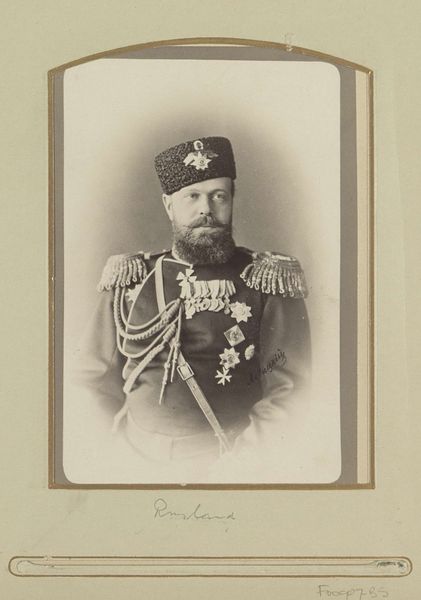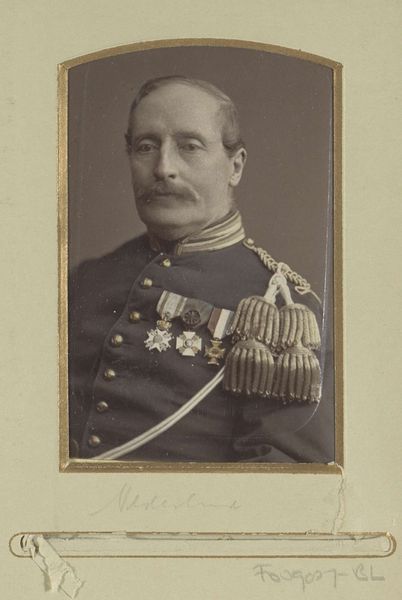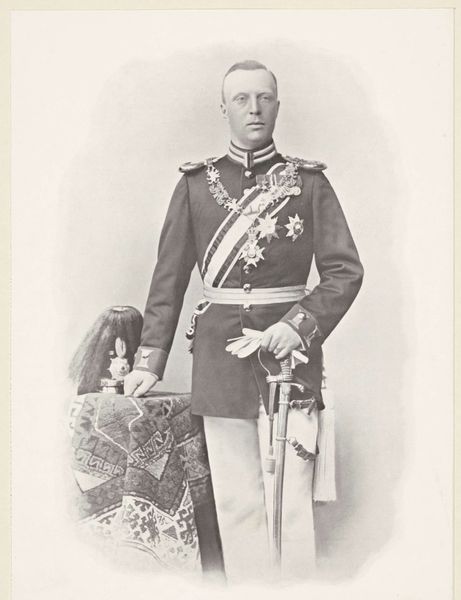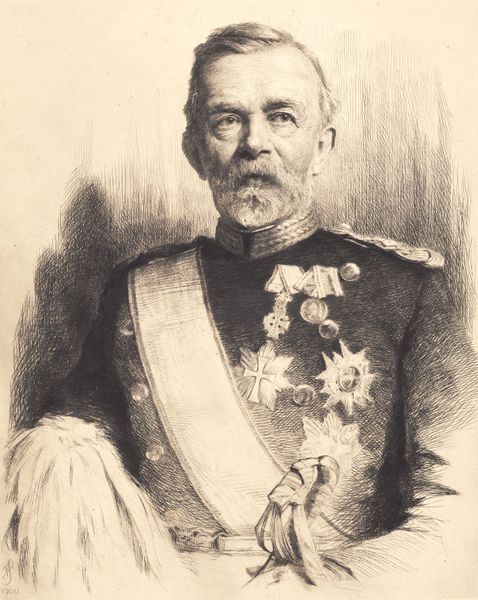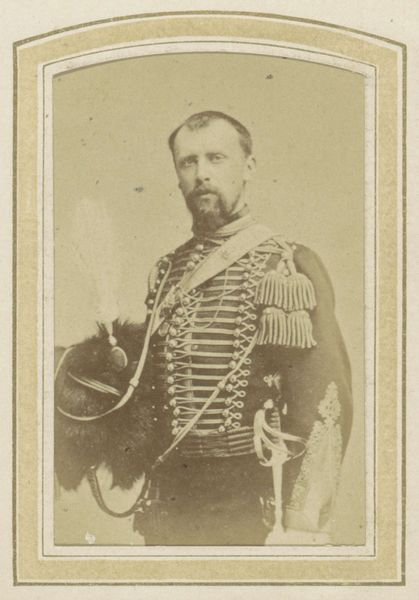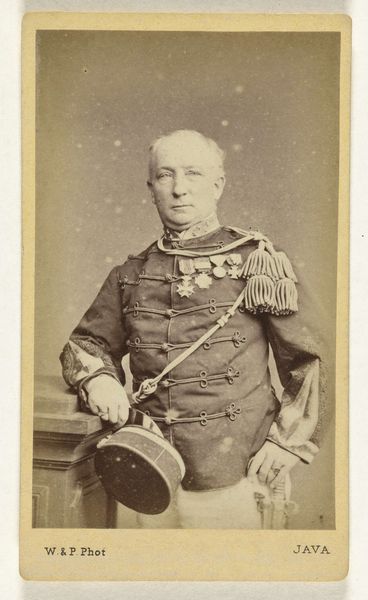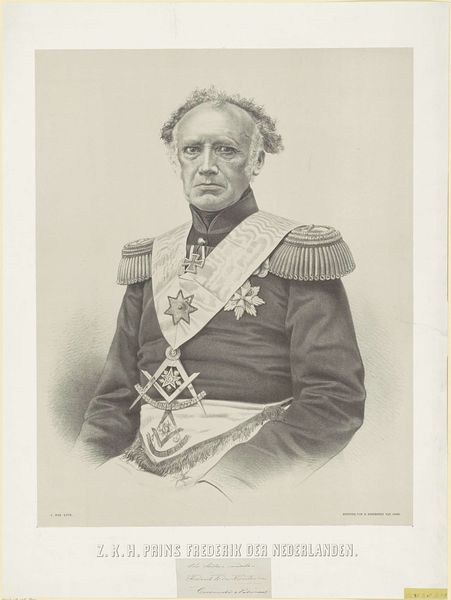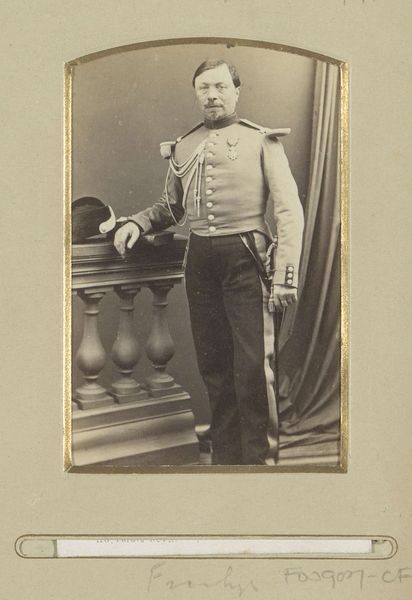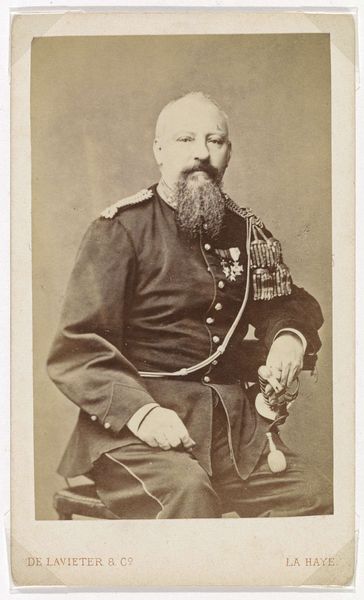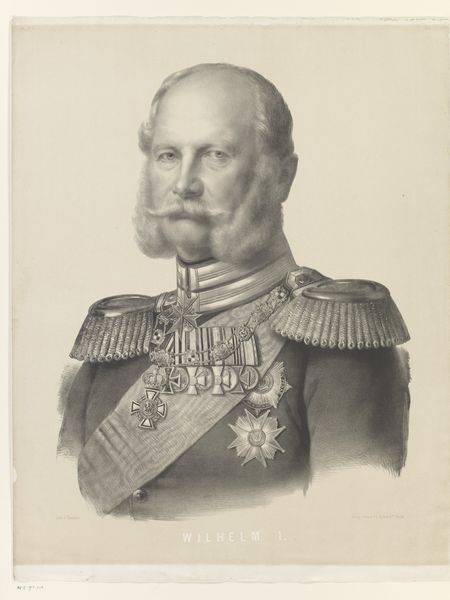
photography
#
portrait
#
16_19th-century
#
photography
#
19th century
#
portrait drawing
#
realism
Dimensions: height 219 mm, width 134 mm
Copyright: Rijks Museum: Open Domain
Curator: Here we see a photographic portrait, "Portret van Willem III, koning der Nederlanden," which translates to Portrait of William III, King of the Netherlands. It’s believed to have been created sometime between 1850 and 1930. Editor: My first impression is how…formal it is. A king in full military regalia, a very studied pose, yet somehow, it also feels vulnerable. The sepia tone and slight blurring also contribute to a wistful atmosphere. Curator: The regalia are deliberate symbols of power, of course. Notice the sash, the medals, and the elaborate braiding. All potent signifiers of his role. Photography in the 19th century had this unique way of lending a kind of mythic status. And yet, the artist of the portrait is, sadly, unknown. Editor: And perhaps intentionally so? Anonymity itself carries a certain symbolic weight. In this image, it underscores the idea of a timeless, almost ethereal representation of power and sovereignty, seemingly independent of its human subject. However, this supposed impartiality in photography masks the very real power dynamics it captures. William's position is asserted not only through his clothing and objects but through the control over how his image is consumed. Curator: An interesting interpretation. And you're right, there's the weight of history, but also the cultural narrative being constructed here. What stands out for me is the contrast between the stark military emblems and the more gentle expression in the King’s eyes, which reflects an inner tension that complicates a one-dimensional reading of this image. Editor: Right! We must remember how monarchs had to manage both external perception and internal conflicts, often playing multiple roles, one to embody state power and tradition, while simultaneously responding to progressive ideologies bubbling under the surface. These subtle shifts in their position, both figurative and literal, give us opportunities to confront colonialism and gender roles, as well as issues such as national identity and socioeconomic divides of the time. Curator: That is definitely worth thinking about in our current environment, as this kind of cultural imagery can indeed spark those deeper questions about representation and responsibility, then and now. Editor: Exactly. It shows how crucial it is to approach such depictions critically. I will definitely see images like this one with renewed insight, recognizing that there are numerous factors influencing even something seemingly simple, such as a portrait.
Comments
No comments
Be the first to comment and join the conversation on the ultimate creative platform.
